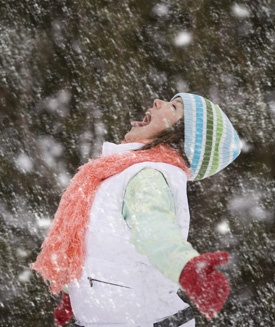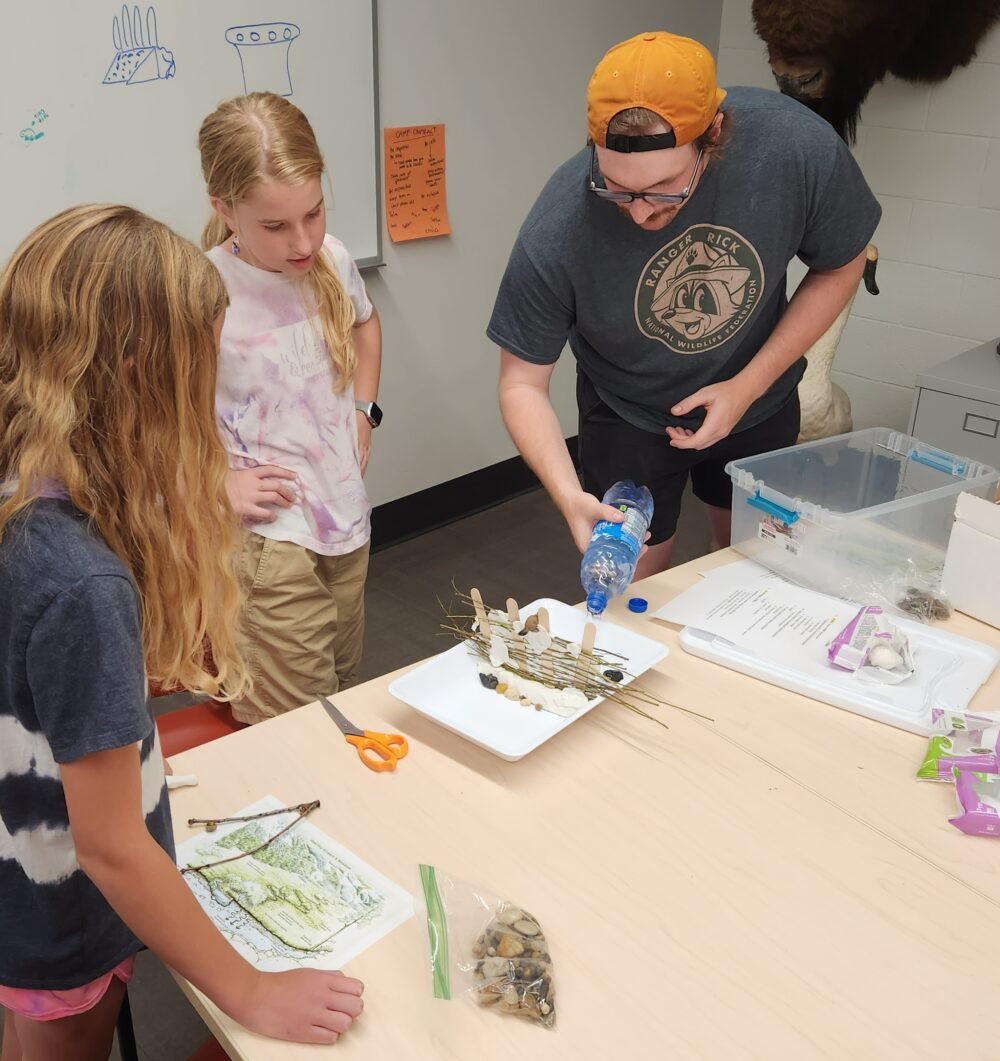We have much more to do and your continued support is needed now more than ever.
7 Myths About Old Man Winter
Guest post by Kimberly Burger Capozzi
 We’d like to clear up a variety of misconceptions about the winter months. Read, learn, and amaze others with your new cold-weather knowledge!
We’d like to clear up a variety of misconceptions about the winter months. Read, learn, and amaze others with your new cold-weather knowledge!
Myth #1: You can “catch cold” from going outside in winter.
Nope. Viruses and bacteria make you sick, not being cold or wet. Colds, flus, and cases of pneumonia are most often spread indoors where people are in close proximity, which makes outside the most germ-free place to be in the winter! It’s still important to wear a hat and scarf on bitter days to protect from cold-related illnesses such as hypothermia and frostbite.
Myth #2: Days get shorter in winter.
Sure, there are fewer hours of daylight in winter than in the summer months. But the days actually start to grow longer after the first official day of winter, which occurs on Dec. 21 or 22 in the Northern Hemisphere. (In fact, by the end of February the amount of daylight is about the same as you find during the autumn days of late October.)
Also there’s a seldom-remembered benefit of shorter days: Kids don’t need to stay up late to see the sunset! Winter sunsets can be beautiful. Here’s the plan: Find sunset times in your area, check out these tips for photographing sunrises and sunsets, grab your camera, and head out with the kids! (When planning your viewing spot, remember that the sun will appear farther south in the sky than at other times of the year.)
Myth #3: Plants stop growing in winter.
Many plants flower or bear berries during the winter months, including ornamental plants you may find in your garden such as holly, winter honeysuckle, and bayberry. Winter weeds (e.g. annual bluegrass, henbit, common chickweed, and speedwell) will pop up in turned-over soil and patches of lawn. And cold-resistant vegetables also grow, such as carrots, parsnips, cabbage, and a variety of greens. Don’t forget: There are millions of Americans who experience mild winters – and they get to see plants grow all year long!
Myth #4: Winter is the time for extra sleep, comfort foods, and inside play.
Every once in a while, hibernating on the couch with a take-out pizza isn’t a bad thing. But a sedentary lifestyle and high-fat, high-carbohydrate diet carry the same health risks in the winter as at other times of the year. Get outside, and your family will stay fit, keep energy levels high, and combat Seasonal Affective Disorder and depression. Fuel your family with a balanced diet so that you feel up to a snowball fight or walk around the block.
Myth #5: Most birds fly south.
Just look outside after a snowmelt to see that this isn’t true! Depending where you live, you might see chickadees, cardinals, jays, magpies, woodpeckers, and titmice among the many varieties of birds that will be out dining on dormant insects and seeds, important food sources in the winter months. Winter birds fluff up their down and feathers for added insulation from wind and cold. To bring your feathered neighbors to your backyard, create a bird-friendly habitat.
Myth #6: Bears sleep all winter.
Not really. Black bears, for example, awake at times, give birth to their young during the winter, and can arouse easily if disturbed. Bear hibernation is sometimes known as “partial hibernation” because it differs from the deep winter sleep of other animals such as groundhogs and chipmunks, which experience significant drops in body temperature and heart rate. A bear’s heart does slow down, and the bear can go without eating, drinking, or eliminating wastes for the entire season. But body temperature drops only slightly. Other “light sleepers” in winter include raccoons and skunks, which have periods of dormancy but venture out on mild days to find food.
Myth #7: Every snowflake is unique.
Okay, so this one is mostly true, with an interesting exception. When talking about lacy, intricate snowflakes (the kind we try to recreate with white paper and scissors), scientists say there are far too many ways these tiny complex crystals can develop to allow for two identical flakes. But sometimes snowflakes fall before developing their unique characteristics and arrive as very simple shapes, like prisms or plates. It may still be tough to find two alike, but fun to try, especially with the help of a microscope. Learn more about snow crystals from the California Institute of Technology.
Kimberly Burger Capozzi is a mom and freelance writer based outside Pittsburgh, PA. She has written about parenting issues, wind power and military spending programs, and chronicles her family’s efforts to cook wholesome meals at www.chefzi.blogspot.com.





















